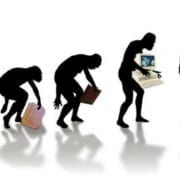6 Silent Productivity and Profitability Pitfalls, part 5 of 7
Silent Killer #4: Worship of Information
In our rush to ‘modernize’ everything and make our enterprises more efficient, we have mistakenly come to believe that information is our most valuable commodity. But data and information are useless without human beings to interpret them. These days, computers can do just about anything – except think for themselves. But we have come to tolerate the illusion that the essential matters of work can be invented, managed, and sustained through the creation, storage, retrieval, display, and publication of information.
Contemporary information systems are blind to many of the key drivers of productivity and have consistently failed in their quest to integrate the diverse operations of a company. By making information the priority, we have lost sight of its fundamental purpose – to enable the people to effectively address the concerns of their customers.
Hi there! This article is available for free. Login or register as a StrategyDriven Personal Business Advisor Self-Guided Client by:
Subscribing to the Self Guided Program - It's Free!
About the Author











Leave a Reply
Want to join the discussion?Feel free to contribute!